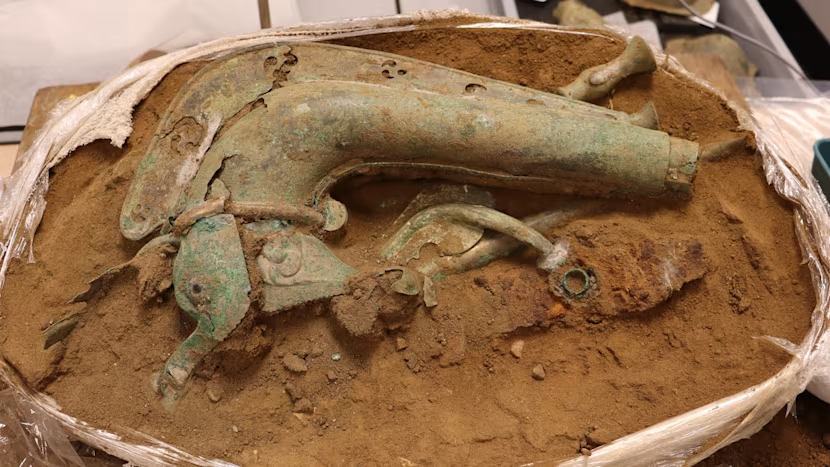Archaeologists have discovered a burial site from the 4th Century BC in Northeast Greece that could be the largest ancient tomb ever found in the country. The site is complete with a set of beast statues guarding the entrance, and experts believe it may have been where Alexander the Great was buried 2,300 years ago. However, there is no definitive proof, as his name hasn't been found anywhere and there are no specific artifacts that can be linked to him. The tomb has been dated to between 300 and 325 BC, around the time Alexander died. The date matches perfectly, and considering the tomb's size and impressiveness, this could have been his final resting place. Inside, archaeologists identified depictions of Panie, goddess of the underworld and daughter of Zeus.
In India, an archaeological site called Chandra kugar, which has been around for over 2,400 years, could contain evidence of a real-life mermaid in 400 BC. One of the more intact remains is a Buddhist temple that was built 1,000 years ago. Scattered across the remnants of the old city are broken pottery shards and a few terracotta plaques. A series of plaques, which appear to date the shunga period around 200 BC, show locals interacting with a mermaid. The plaques depict a woman naked from the waist up with a fish tail from the waist down. One plaque shows a mermaid swimming in a body of water with ordinary humans gaping at her from the shore. In another plaque, the mermaid is trapped in a fishing net. The series seems to be showing an event in which people discovered a mermaid off the coast and then caught her.






